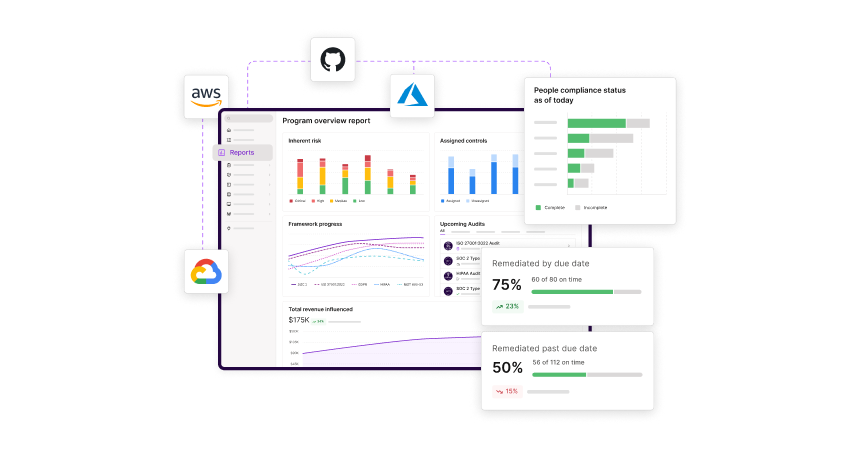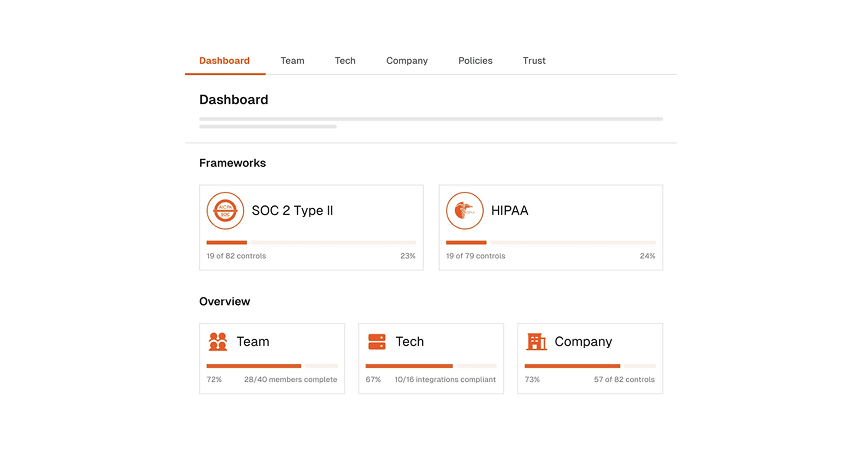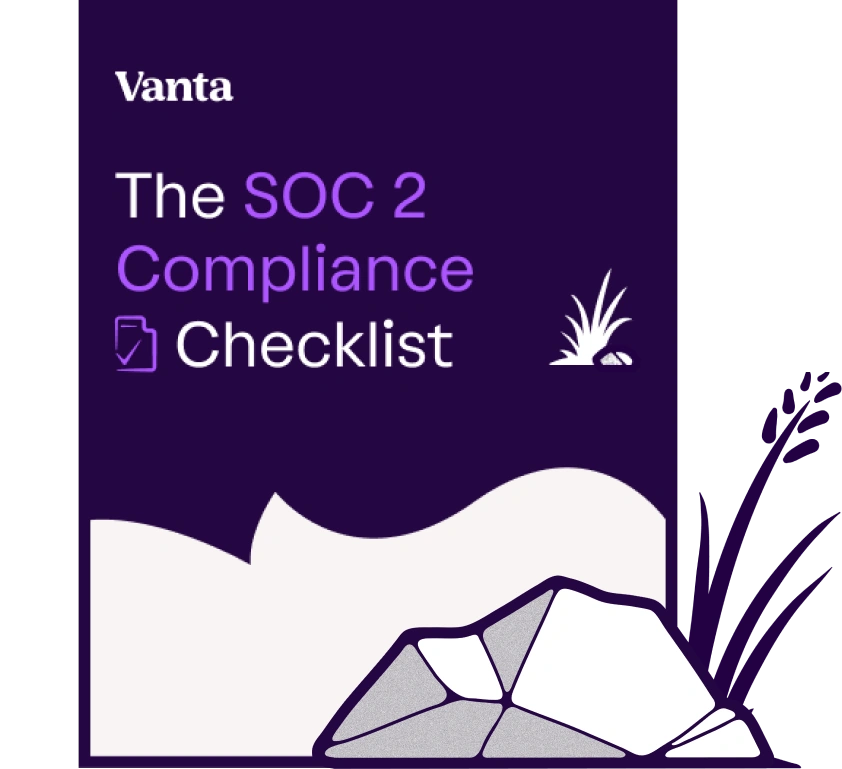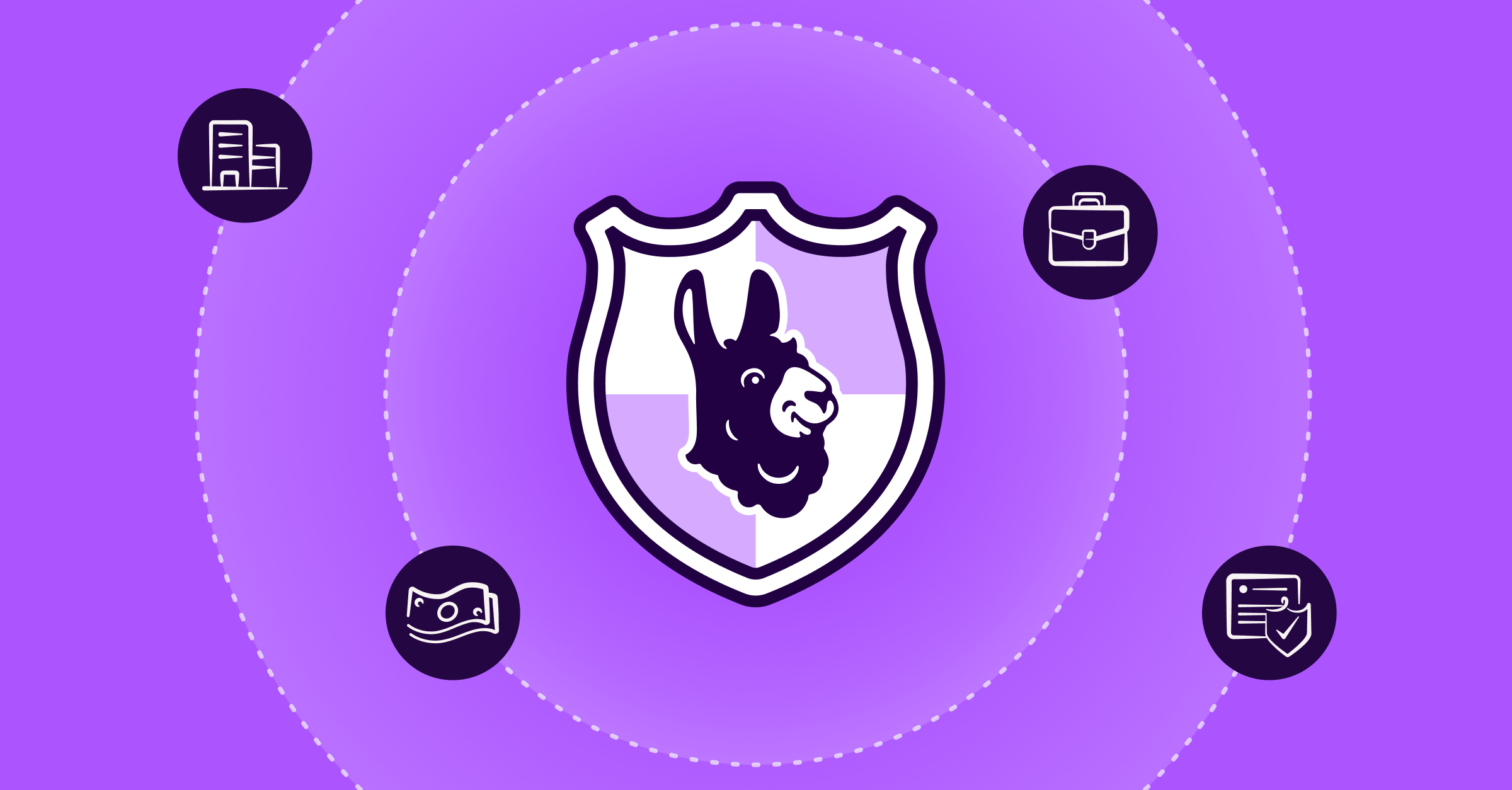Share this article

The best compliance audit software for 2025
Accelerating security solutions for small businesses Tagore offers strategic services to small businesses. | A partnership that can scale Tagore prioritized finding a managed compliance partner with an established product, dedicated support team, and rapid release rate. | Standing out from competitors Tagore's partnership with Vanta enhances its strategic focus and deepens client value, creating differentiation in a competitive market. |
Compliance audits that rely on manual, disconnected processes often turn into a scramble across spreadsheets, email threads, and unclear ownership. And for resource‑constrained teams, every hour spent chasing evidence or reworking controls is an hour not spent shipping products.
In 2025, the right compliance platform can do more than prep you—it can help you run your audit end-to-end, from readiness to report, with real-time evidence and auditor collaboration built in.
In this article, we review five of the best compliance audit software solutions on the market. Read on for each platform’s key features, pros, and cons to find out which tool is best for you and your team.
The state of the compliance audit software market in 2025
If you’re in the market for a solution that lets you streamline compliance, you’re not alone. The GRC software market is projected to grow by about 10% in 2025 to $50.72B as more organizations recognize the benefits of replacing tedious manual processes with automation and continuous monitoring capabilities.
Why is the audit software market booming now? Chalk it up to the following factors:
- Escalating regulatory complexity: Increasing and overlapping requirements are driving demand for automation, streamlined evidence collection, and audit fatigue reduction
- Growing security pressure: AI-powered threats and growing digital footprints are pushing organizations to embed compliance earlier in development and security workflows
- Ongoing technology shifts: Ongoing digital transformation efforts are pushing companies to replace on-prem solutions with cloud-native audit tools that offer automation and now AI capabilities
For many organizations, investing in an audit and compliance platform is worth it: An IDC whitepaper found that Vanta customers spend 82% less time per audit.
How we picked these tools
A compliance audit software tool should reduce toil, clarify ownership, and adapt as frameworks change. We used the following criteria to assess existing solutions on the market—you can use these as a guideline when doing your own due diligence on vendors, too.
Disclaimer: To help you find the best compliance audit software, we’ve researched and ranked a selection of leading platforms. While we may be biased about Vanta being the top option, we aim to provide a comprehensive view so you can choose the right fit for your organization.
Best compliance audit software
#1 Vanta

Vanta is the most comprehensive trust management and compliance automation platform on the market. It’s built to simplify and accelerate compliance by automating the most time-consuming aspects of security audits so you can quickly achieve and maintain compliance with critical frameworks like SOC 2, ISO 27001, CMMC, and more.
Use Vanta to centralize evidence, map controls across frameworks, and keep your organization audit-ready. Vanta is a strong fit for enterprises and fast-growing companies that need automation, scale, and auditor-friendly workflows.
When you use Vanta, you can bring your own auditor—or choose from more than 100 trusted audit firms. With more than 20,000 audits already completed through Vanta, teams can confidently streamline reviews from start to finish.
Ideal for: Enterprises standardizing controls across multiple frameworks, replacing spreadsheets with continuous monitoring, and streamlining auditor reviews; startups looking for the fastest path to compliance so they can win bigger deals sooner.
Key features
- Automated evidence collection across more than 400 cloud, SaaS, and endpoint integrations
- Direct auditor access to source data for accuracy and speed (no screenshots)
- Evidence tracking dashboard to monitor requests, submissions, and approvals in real time
- Auditor collaboration spaces with scoped, read-only views and early access options
- Granular role-based access control, SSO, and more to stay secure and in control
- Seamless end-to-end audit management that replaces folders and spreadsheets
- Risk register, issue remediation, and Trust Center publishing to extend audits into broader GRC
- AI-assisted remediation for faster fixes
- Vanta AI for guided workflows that keep you in the loop
{{cta_simple40="/cta-blocks"}}
#2 AuditBoard

AuditBoard is a global platform for connected risk that’s transforming audit, risk, and compliance. AuditBoard’s platform unifies audit, risk, and compliance teams with tools that help teams scale efficiently, reduce manual effort, and more.
Ideal for: Internal audit and SOX teams formalizing audit programs, centralizing evidence, and collaborating across risk, compliance, and IT.
Key features
- Centralized audit planning and fieldwork workflows
- Issue management with remediation tracking and attestations
- Evidence repository linked to controls and testing
- Controls library and policy management
- Risk assessment and mapping across processes and controls
- Workflow automation and approvals
#3 OneTrust

OneTrust is an AI-ready governance platform that aims to help companies accelerate innovation while ensuring responsible data use. OneTrust’s unified platform includes capabilities around AI governance, data use governance, tech risk and compliance, consent and preferences, privacy automation, and third-party management.
Ideal for: Privacy-led programs consolidating data governance, third‑party risk, and security evidence under a single platform.
Key features
- Central policy and control catalog with mappings
- Data inventory and discovery to align controls to systems
- Automated evidence collection and assessment workflows
- Vendor risk management and third‑party assessments
- Privacy modules integrated with security controls
- Reporting for readiness, exceptions, and approvals
- APIs and connectors for enterprise systems
#4 Drata

Drata helps organizations automate compliance, manage risk, and accelerate security reviews for a stronger security posture, streamlined security reviews, lower costs, and less time spent preparing for audits. Drata’s compliance automation focuses on continuous control monitoring and fast onboarding.
Ideal for: Suits lean teams that want a prescriptive setup and out-of-the-box integrations to move quickly toward audit readiness.
Key features
- Automated evidence collection with prescriptive setup
- Continuous monitoring for key cloud controls
- Control mapping and readiness tracking across frameworks
- Policy templates and task assignments for owners
- Auditor-facing views to streamline reviews
- Public APIs for custom connectors
#5 Delve

Delve aims to help companies achieve and maintain compliance without busywork by unifying risk, controls, and evidence. Delve’s platform uses AI agents to auto-collect evidence, serve as customer copilots, and customize controls.
Ideal for: Very small teams piloting an AI‑assisted approach to unifying control operations and audit evidence.
Key features
- Control library with mapping to common frameworks
- Automated evidence management
- Tasking and ownership workflows for operators
- Integrations to key infrastructure and collaboration tools
- AI‑assisted mappings and scans
How to choose the right compliance audit software
Choosing compliance audit software comes down to matching features with your team’s needs and future growth. Use these steps to guide your evaluation of compliance audit software options.
- Start with your pains and desired outcomes. Identify what you need to fix—manual processes, limited resources, or shifting compliance requirements.
- Define your decision criteria. Set clear benchmarks like time savings, frameworks supported, and auditor experience.
- Inventory your stack and data flows. Ensure the platform has native integrations for cloud, identity, code, asset, and ticketing systems.
- Validate automation coverage. Map controls to available signals and confirm evidence updates are frequent and complete.
- Assess auditor workflows and test. Involve your auditors early by granting them scoped access to the platform. Verify that they can trace evidence back to the source system, and track whether the tool reduces back-and-forth during the audit process.
- Model scale and total cost of ownership. Project performance and costs across users, assets, and frameworks, and test pricing tiers and SLAs.
Ready to pursue an audit with Vanta?
Compliance audit software should shrink prep time, clarify ownership, and make multi-framework compliance repeatable.
With Vanta, you can automate compliance, manage risk, and prove trust continuously. Want to learn more about how Vanta can get you audit-ready quickly? Check out a demo.
{{cta_simple40="/cta-blocks"}}
Compliance audit software FAQs
What is compliance audit software?
Compliance audit software centralizes controls, automates evidence collection, and streamlines collaboration with auditors. It helps teams track readiness, map controls across frameworks, and generate reports, reducing manual effort and improving consistency during audit preparation and fieldwork.
How does it reduce audit prep time?
By integrating with cloud, identity, and ticketing systems, compliance audit platforms automatically collect evidence and monitor controls. Tasks, ownership, and reminders keep work moving, while reusable mappings minimize rework across frameworks to cut time spent on manual screenshots and exports.
Which frameworks are typically supported?
Common coverage includes SOC 2, ISO 27001, PCI DSS, HIPAA, GDPR, and others. Many platforms also support additional standards via mappings or templates so teams can scale from a single framework to a broader compliance portfolio without starting from scratch.
How should we evaluate integration needs?
List your critical systems and data sources, then verify native connectors exist and capture the required artifacts. Confirm your evidence refresh cadence, scope of signals, and how gaps are flagged. Strong integration coverage minimizes manual uploads and reduces audit risk over time.





FEATURED VANTA RESOURCE
The ultimate guide to scaling your compliance program
Learn how to scale, manage, and optimize alongside your business goals.













.webp)



.svg)
.svg)
.png)
.png)
.png)